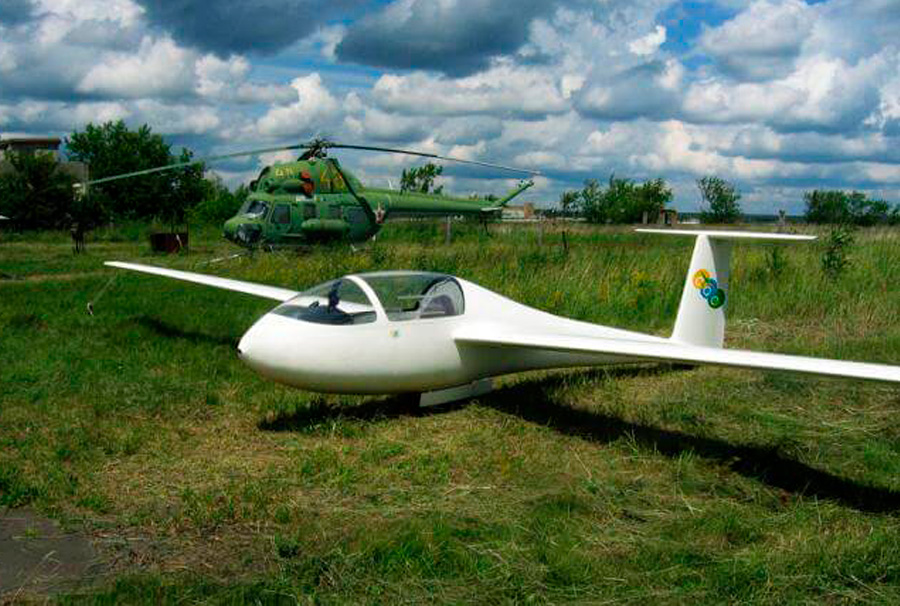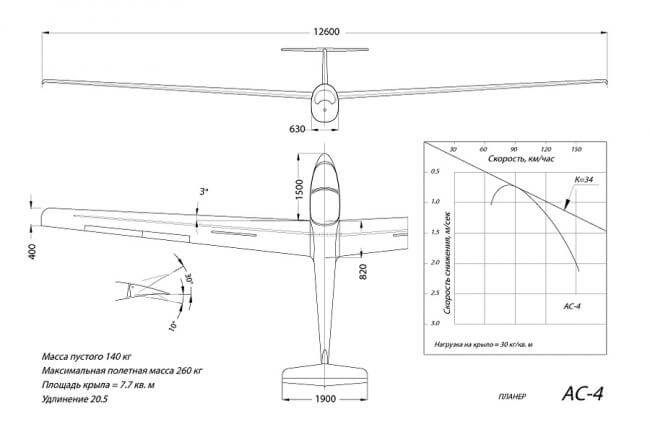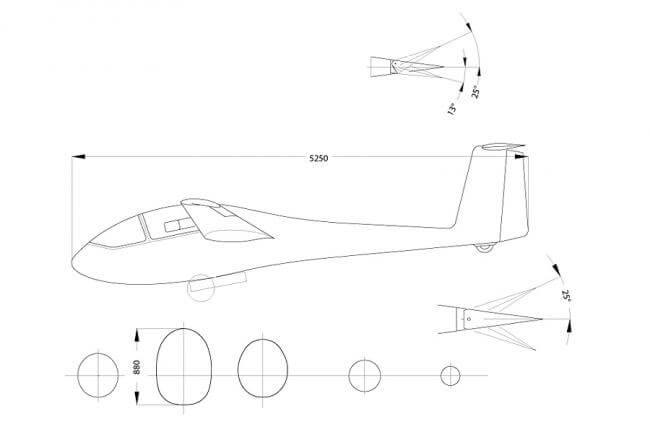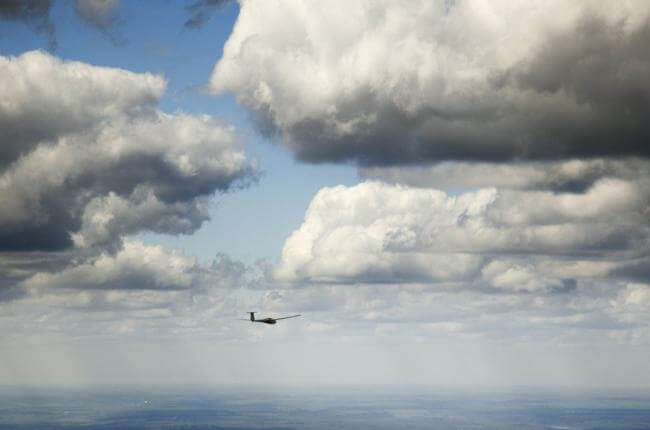- 17.09.2016

Glider AC-4 is a compact sport towed aircraft. It is the lightest glider of all other models AC. The AC-4 glider is notable for assembling and disassembling easiness. It is characterized by the wide application.
The AC-4 glider has got high flight characteristics and excellent dirigibility.
Fuselage
The AC-4 glider`s fuselage is represented monocoque type of structural system. It is manufactured of high-strength aviation foamed plastic and imbued with epoxy resin glass cloth. The construction has heavy-duty durability.
- The fuselage is 5.25 meters long.
- It`s overall height is 1.25 meters.
- The tail fin is T-shaped.
Wings
The wing span of the trapezoidal wing is 12.6 meters. The aspect ratio of an airfoil is 20.5.

For wing making laminar airfoil, FX60-157 was used. This airfoil, which is standard for AC series of sailplanes, was engineered in Germany. The airfoil has a high index of maximal lifting force and meets requirements to surface waviness of the wing.

The surface waviness along the airfoil according to American standard is less than 0.1 millimeter.
The correct choice of the aspect ratio of an airfoil gives at the speed 90 kilometers per hour the time of transposition in a spiral from the angle of list +45 degree to -45 degree no more than 3 seconds.
Unit load at the wing by the takeoff weight 250 kg makes up 32.5 kg/m2.
The weight of the swing section of wing is 38 kilograms.
The control of air brakes and ailerons is realized by the system of connected in the center lateral pulls.
Landing gear
The landing gear of the glider AC-4 is a construction with one retractable main wheel and nonretractable tailwheel.
The main wheel with inner tube has size 310 millimeters.
The fit of the main wheel is realized by a ball bearing.
The nonretractable free-wheeling tailwheel, which is aimed for stabilization of glider during takeoff run and landing, has diameter 200 millimeters.
The shock absorber is not specified.
Sailplane uses drum brakes. The brake is actuated by a Bowden cable. The brakes are controlled by the bicycle brake lever, which is located at the control arm.
Cockpit
At the glider AC-4 one-man cab is installed. The canopy consists of two parts.
The front part of the canopy is fixed.
The central part of the canopy opens to the right.
For the accident canopy dumping it is necessary to operate two red levers, which are located on the both sides of the canopy.

The field of vision of the cockpit upwards and from side to side is no less than 300 degrees.
The cab of the glider AC-4 makes it possible to take seats for tall (up to 190 cm) strong physique pilots with a weight up to 120 kilograms.
The rudder pedals and chair back could be adjusted at length.
The instrument panel allows placing of complete set of standard flight- navigational aids, and at the same time, there is some space for additional navigation instruments.
In the fin there is an antenna of an ultra-short-band station.
The glider has a 4-point harness like at all other models AC.
"AC-4" Performance:
- Empty Weight - 140 kg;
- Gross Weight - 275 kg;
- Wing Span - 12.6 m;
- Aspect Ratio - 20.6;
- Wing Loading factor (G=250 kg) - 32,5 kg/m2
- Wings square - 7.7 m2
- Max speed - 220 km/h;
- Max Load Factors - +5.3/-2.65;
- Stall speed (G=230 kg) - 65 km/h;
- MAX L/D (V=90 km/h) - 34:1;
- MIN sink (V=90 km/h) - 0.7 m/s;
- Bank switching time responce (±45?,V=90 km/h) - 3 sec.